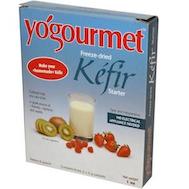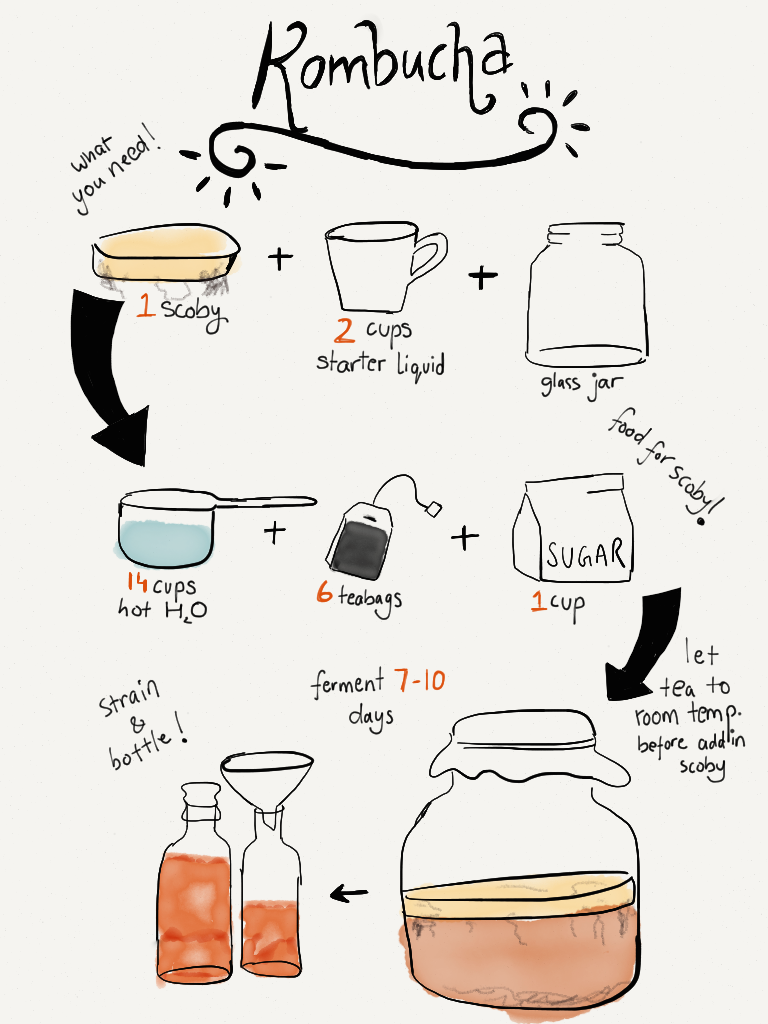It all started with an unexplainable attraction towards kefir. This sour, milky drink is rich in a variety of probiotics and can be used in smoothies, cereal or by itself. I’ve also heard it being used as a buttermilk replacement.

All this goodness comes at a literal price. Kefir sells for as much as $7 a litre including taxes here in Canada. I looked into making my own and bought one of these starter kits. Again, this started to be expensive as these are one time use kits. Unlike actual milk kefir grains, you cannot use them for a second batch.
So this August when I moved into my new house in Vancouver, I was greatly curious when my roommate Amy introduced kombucha to me. She has been making her own for a while now. It is fermented tea drink, also rich in probiotics. It is fizzy, tangy and a much better alternative to drinking pop. All you need to get going is a culture of your own (also called SCOBY or a mother), some kombucha from a previous batch (also called starter liquid), a glass jar, tea and sugar. Compared to kefir, it also takes longer to ferment - about 7-10 days. This is perfect for me, as I would only be drinking kombucha a few times a week.
Here is my sketchnoted recipe to make kombucha:

Every batch results in a new SCOBY layer forming on top of your old one, so getting a layer from a friend would be the best way to go. You can also find people selling kombucha mothers in classified ads. I have also heard of people growing their own mother from raw bottled kombucha. The starter liquid is just kombucha from a previous batch or raw bottled kombucha from a store (make sure its the raw kind - you’ll see brown culture deposits in the bottom of the bottle). Any kind of black or green tea can be used to make kombucha.
The first batch turned out wonderfully. Naturally I wanted to scale up production and did a much larger batch the next time round. However I didn’t bother measuring out proper ratios of sugar and tea. This was a big mistake. My usual primary fermentation stage took double the time.
It is important to maintain the right ratios when making your own kombucha. Otherwise you risk the chance of contaminating your SCOBY. It’s a living being and needs proper food!
After bottling kombucha, you can also play with flavourings and infusions. A favourite of mine is ginger & lemon. Other suggestions are:
- Lavender & blueberries
- Cranberries & hibiscus
- Apple & cinnamon
- Orange zest, cinnamon, star anise & cloves
With this secondary fermentation stage, you can infuse flavours and also build up carbonation. Make sure to place bottles in the fridge afterwards to stop fermentation!